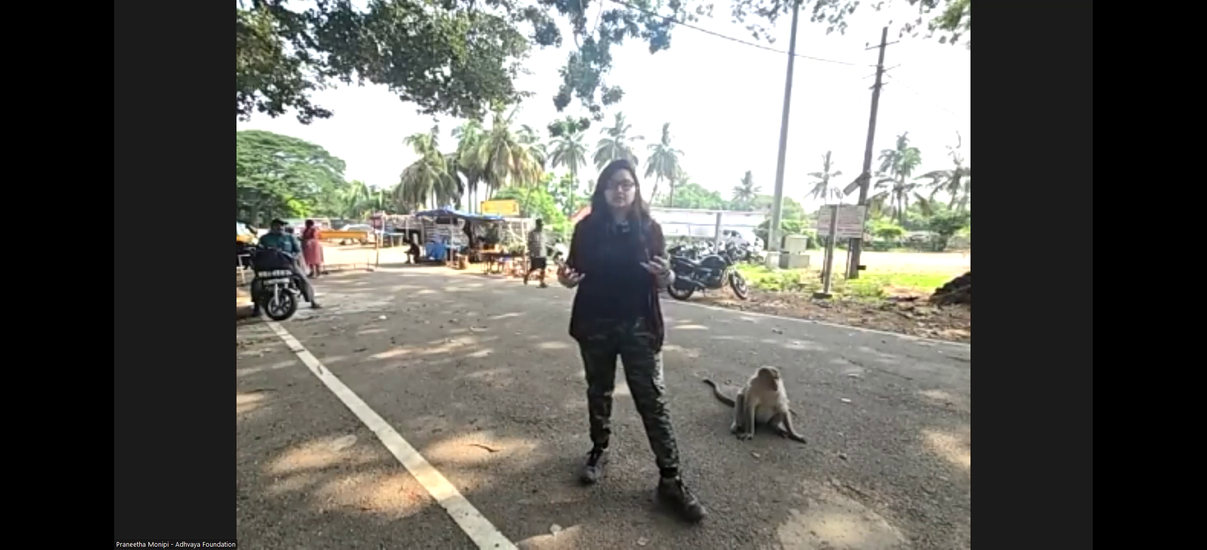International Macaque Week 2025: Connecting Across Borders in India, Indonesia, Japan and beyond (Part 2)
- info607853
- Jul 9
- 4 min read

Read Part One - "How Students in Indonesia and India Learned to Care for Macaques, Together"
Virtually Touring Macaque Habitats: Respect and Coexistence Everywhere
As another part of International Macaque Week (IMW), the AfA Macaque Coalition partnered up with multiple primate experts and organizations to host two live-streamed tours designed to tell macaque stories in various settings: a rehabilitation center, a zoo, in an urban area, and between forest fragments.
On May 2 - Traumatized Macaques and JAAN Indonesia’s Rehabilitation Work
With Jakarta Animal Aid Network Indonesia (JAAN Indonesia), Femke den Haas, Founder and Director of JAAN Indonesia, walked us through the Macaque Rehabilitation Center, located in Cikole, West Java. JAAN Indonesia has been campaigning against the use of long-tailed macaques for street performance, specifically topeng monyet, since 2009. Together with the wildlife authority, JAAN Indonesia rescues and rehabilitates the macaques before reintroducing them back into the wild.

This virtual tour featured Femke and keepers demonstrating the socialization process and the rescued macaques interacting with enrichment in real time. Stories of how individual macaques ended up at the rehabilitation center were told; Q&As with the live audience attending on Zoom filled in between the stories and live demos. Tours like this, impossible to conduct in person due to biosecurity concerns like zoonotic disease risks and the need to minimize stress for rehabilitating animals, offer rare insights into behind-the-scenes conservation work.

A panel discussion followed the 30-minute tour, and it was such an honor to have Mr. Yuyun Saepul Uyun from the BKSDA West Java, the wildlife authority attend the event and share their perspectives, in Bahasa Indonesia. His presence reinforced the importance of multi-stakeholder collaboration - even when priorities differ, common ground for mutual conservation goals can be found.
“...I feel moved and motivated to educate people about dancing monkeys and how we can help monkeys that are going through their rehabilitation process.” – Participant Feedback
Watch the May 2 virtual tour recording on YouTube.
On May 6 - Coexistence looks different in different contexts
On May 6, for the second live virtual tour, we were spoiled with an exciting assortment of speakers from different conservation backgrounds!
Praneetha Monipi, Founder of Adhvaya Foundation, works in urban settings with the local community of Mysore to find coexistence with bonnet macaques and tourists. We often hear how feeding wildlife is bad, but Praneetha really drives home the message by naming the individuals on site who have lost a tail or a limb, or are extremely obese, all due to the simple act of feeding, often by tourists.
Santanu Mahato, PhD Researcher at the Salim Ali Centre for Ornithology and Natural History (SACON), brought the audience along the route used by lion-tailed macaques as they navigate among forest fragments intermingling plantations and human settlements. For technical reasons, this tour was pre-recorded, but even so, Santanu was able to provide an immersive experience focused on the daily challenges the macaques have to overcome to survive, through footage of the macaques foraging from an open dumping site and the sound of vehicles operating on the road that cuts through their habitat.
Misato Hayashi, Academic Manager of Japan Monkey Centre (JMC), represented a zoo community that collaborates with field-based conservation practitioners. The presentation prepared by Hayashi explained how the zoo came to acquire the macaques in their collection, adding historical perspectives and future prospects to their research and conservation work with bonnet and lion-tailed macaques in captivity.

Both Praneetha and Santanu effectively showcased field realities and the urgency of multi-stakeholder collaboration for human-wildlife coexistence. During the panel discussion after the tours and presentation, speakers talked about the different roles of conservationists working in-situ and ex-situ settings and how they can sort through each other’s priorities and work together towards mutual goals. A particularly engaging moment came when Prof. Mewa Singh, who joined as a live audience on Zoom, participated in the panel discussion, highlighting his collaborative work with Cologne Zoo in Germany on conserving the lion-tailed macaque. He also offered to share resources and expand partnerships to include the Japan Monkey Centre.
“Sessions like this should be held more often, so we can stay updated on current research.” – Participant Feedback
Despite a few challenges stemming from poor internet connectivity, the tours were informative, enjoyable, and educational.
Watch the May 6 virtual tour recording on YouTube.
Conclusion
International Macaque Week this year, combining student exchanges (see Part 1), expert tours, and collaborative discussions, demonstrated how education, empathy, and cross-border communication can plant the seeds, through mutual collaboration across multiple stakeholders, for peaceful coexistence between humans and wildlife.












Comments